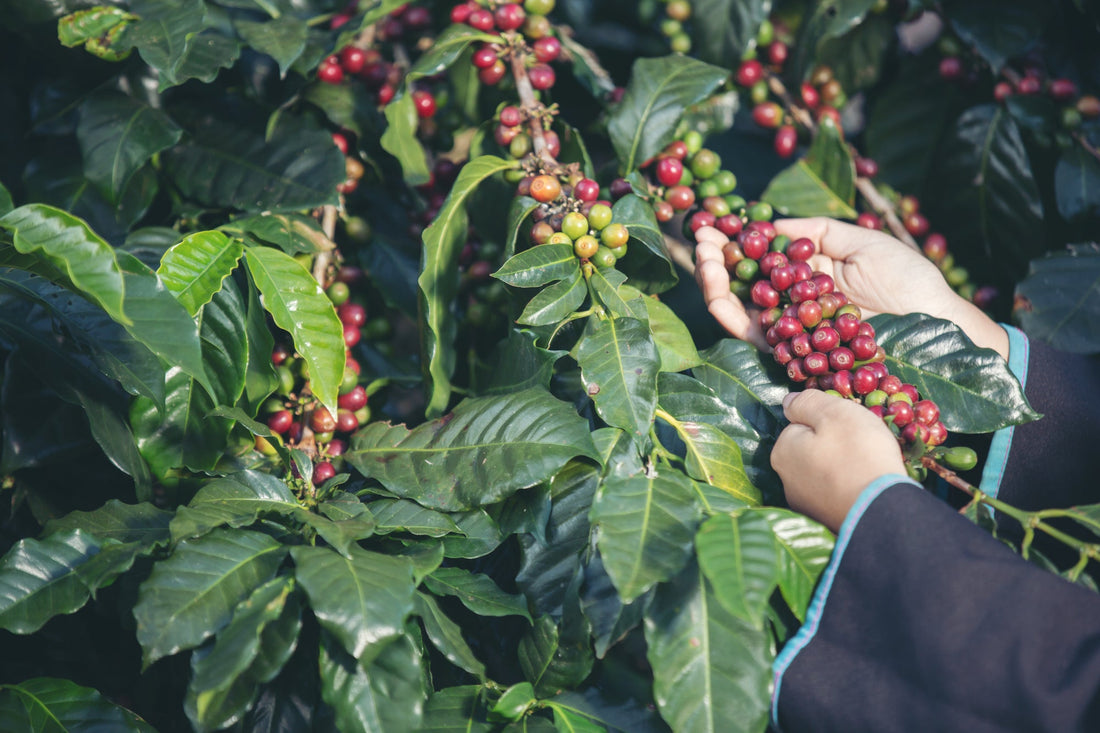
Coffee - Interesting Facts
Share
What are the top 5 coffee producing countries in the world?
Brazil, Vietnam, Colombia, Indonesia and Ethiopia are the top 5 coffee producting countries in the world (as at the end of 2020)
Brazil tops the production at a whopping 63.4M x 60kg bags of coffee, followed by Vietnam at 29M x 60kg bags. Amazing when you consider the size difference of both countries.
These top 5 countries produce 75% of the worlds coffee.
What are the most consumed beverages in the world?
Water, Tea and Coffee are the most consumed beverages in the world (in order of consumption). Roughly half a trillion cups of coffee are drunk each year.
Coffee is the second most traded commodity in the world.
Which part of the world does coffee grow?
Coffee beans are primarily grown in the "Coffee Belt," which is the area between the Tropic of Cancer and the Tropic of Capricorn. This includes countries such as Brazil, Colombia, Ethiopia, Vietnam, Indonesia and Papua New Guinea. Each region produces coffee beans with unique flavors influenced by factors such as altitude, soil composition, and climate. Very similar to grapes grown in specific loactions producing very specific and unique tastes 'Terroir'.
What are the two main species of coffee plants called?
The two main species of coffee plants that produce the beans used for coffee production are Coffea arabica and Coffea robusta. Arabica beans are known for their smooth flavor and are grown at higher altitudes, while robusta beans are hardier and have a stronger, more bitter taste.
Arabica coffee beans are renowned for their smooth, complex flavors and aromatic qualities.
Arabica Bean Varieties
Varieties of note and their flavour profiles
Typica: Considered one of the oldest and most traditional Arabica varieties, Typica offers a balanced flavor profile with hints of chocolate, caramel, and citrus. Its moderate acidity and medium body make it a favorite among coffee connoisseurs.
Bourbon: Named after the island of Bourbon (now Réunion), Bourbon beans are prized for their sweetness, vibrant acidity, and floral aromas. Often noted for flavors reminiscent of berries, stone fruits, and chocolate, Bourbon coffee is a delightful treat.
SL28: Originating in Kenya, SL28 is celebrated for its exceptional cup quality. With a lively acidity, full body, and intense fruity flavors, it's a popular choice for specialty blends and is cherished for its complexity.
Gesha (or Geisha): Initially discovered in Ethiopia but popularized in Panama, Gesha beans are highly sought after for their exotic and distinctive flavor profile. Offering floral, tea-like aromas and a medley of tropical fruit, jasmine, and bergamot notes, Gesha coffee is an extraordinary experience.
Ethiopian Heirloom: Representing a diverse array of indigenous Arabica varieties grown in Ethiopia, Ethiopian Heirloom beans showcase wild and complex flavor profiles. Featuring floral, fruity, and spicy notes, they embody the rich coffee heritage of their birthplace.
SL34: Another prized Kenyan variety, SL34 boasts a bright acidity, balanced sweetness, and intricate flavor profile. Often revealing hints of blackcurrant, berry, and citrus with a wine-like acidity, SL34 coffee is a delightful exploration of flavors.
Caturra: Originating as a mutation of Bourbon in Brazil, Caturra beans offer a smooth, sweet cup characterized by a medium body and mild acidity. Often utilised in blends, Caturra coffee is esteemed for its consistency and harmonious balance.
These Arabica varieties represent just a glimpse into the diverse and captivating world of specialty coffee. Each offers a unique sensory experience, inviting coffee lovers to explore the nuances of flavor, aroma, and origin inherent in every cup.
Altitude: Altitude plays a crucial role in coffee cultivation. Arabica beans are typically grown at higher altitudes, ranging from 600 to 2000 meters above sea level. Higher altitudes provide cooler temperatures, which slow down the maturation process of the coffee cherries, allowing them to develop more complex flavors.
Harvesting: Coffee beans are harvested from the coffee cherry, which grows on the coffee plant. The cherries are either picked by hand or harvested using machinery. The beans are extracted from the cherries through a process called milling. After extraction, the beans undergo processing methods such as washing, natural (dry) processing, or honey processing, which affect their flavor profile.
